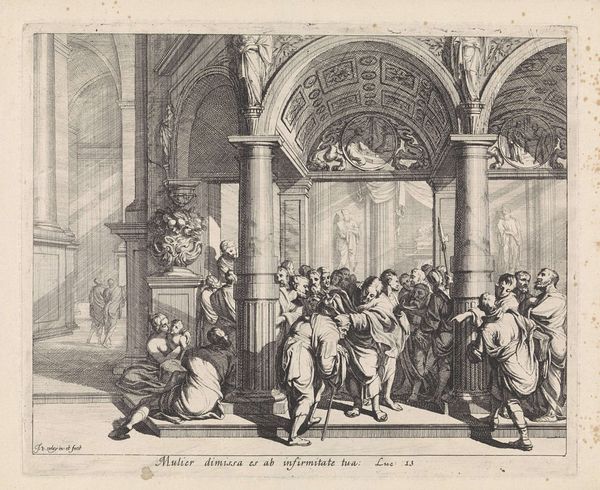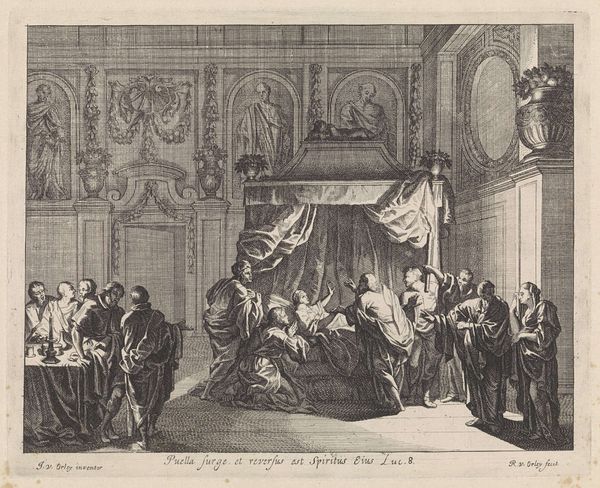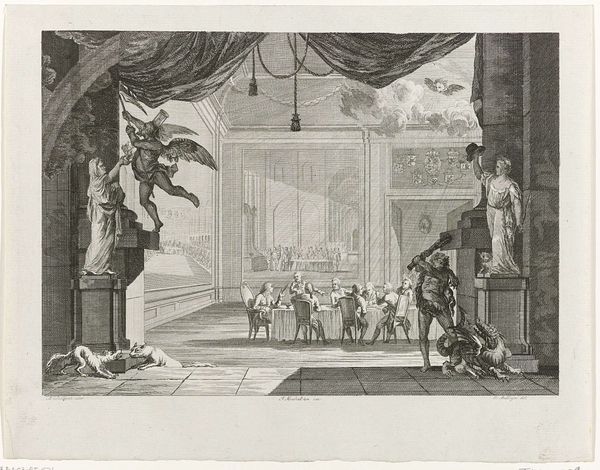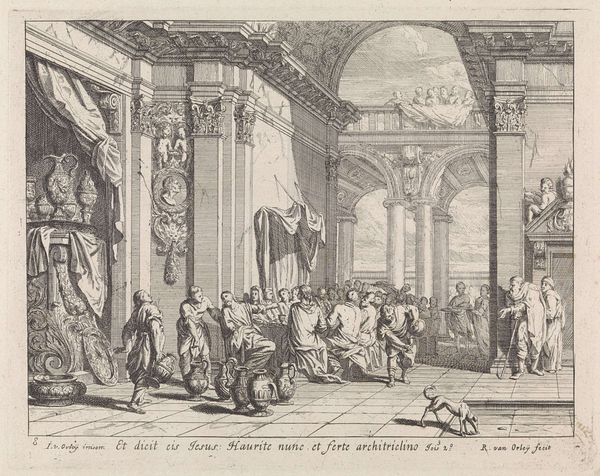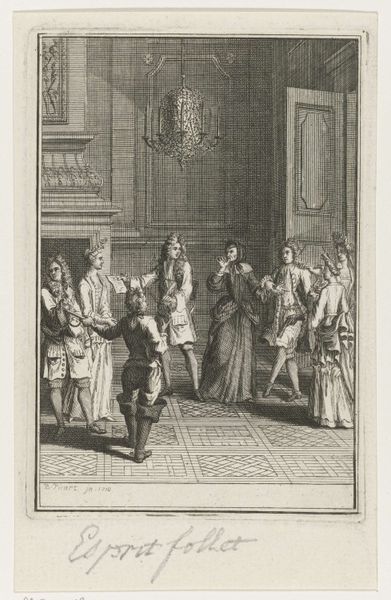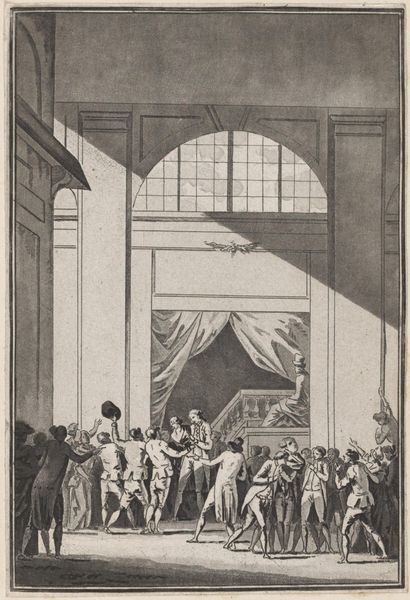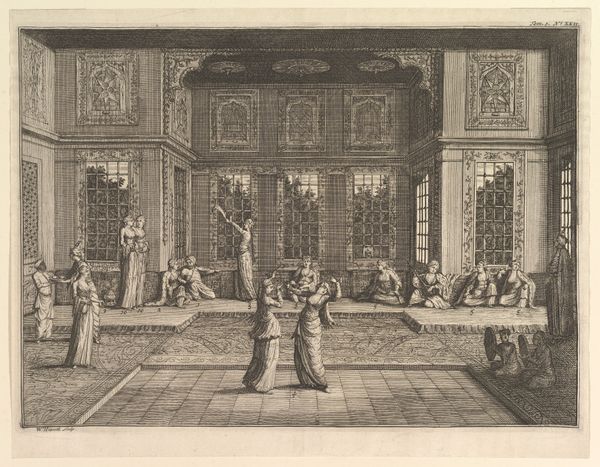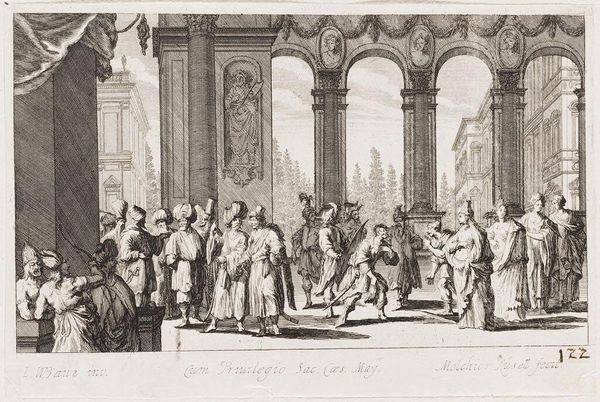
print, engraving
#
baroque
# print
#
figuration
#
history-painting
#
engraving
Dimensions: height 215 mm, width 258 mm
Copyright: Rijks Museum: Open Domain
This print, *Christus en de overspelige vrouw* (Christ and the Adulterous Woman), was made by Jan van Orley in the late 17th or early 18th century. It’s an engraving, meaning that the image was incised into a metal plate, which was then inked and pressed onto paper. The process demands careful labor. The artist would have used specialized tools to carve the fine lines that define the scene, building up tone and texture through precise, repetitive actions. This was not simply a reproductive technique, but a highly skilled and valued practice, with its own distinct aesthetic. The stark black and white contrast, and the intricate detail achievable through engraving, give the scene a dramatic intensity. Consider too the social context: prints like these made art and information accessible to a wider audience. It collapses traditional hierarchies separating fine art and craft, high and low culture, and highlights the value of skilled labor in the production of images.
Comments
No comments
Be the first to comment and join the conversation on the ultimate creative platform.

